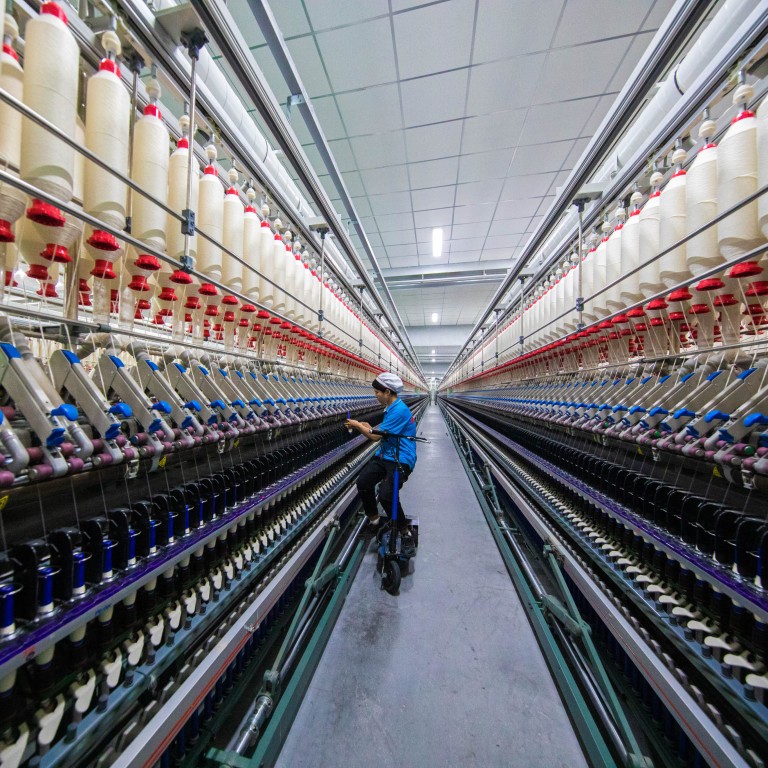Despite US sanctions, the textile industry in Xinjiang is demonstrating record growth thanks to the implementation of artificial intelligence and 5G. Textile exports from this region reached 108 billion yuan ($14.8 billion) last year, with yarn and other raw material volume increasing by 74%, and clothing by 30%. The implementation of AI and 5G has increased energy efficiency, improved product quality, reduced costs, and enhanced the global competitiveness of Xinjiang’s cotton. It is expected that by the end of next year, 70% of China’s textile factories will have digital connectivity and AI integration. American sanctions have effectively banned the import of textiles from Xinjiang due to US concerns about the use of forced labor of Uyghurs in the region’s textile industry.
Xinjiang factories automated cotton spinning even before the sanctions were imposed. However, despite machines handling all stages of the process, they operated independently and required human control. Faults, downtime, and other important data were recorded manually. Quality control also relied on selective manual inspections due to high production volumes. Electricity bills were issued monthly based on overall factory consumption, without much attention to how efficiency could be improved.

Despite US sanctions, the textile industry in Xinjiang is demonstrating record growth thanks to the implementation of artificial intelligence and 5G. According to the European Parliament, textile factories worldwide account for 10% of total greenhouse gas emissions, surpassing even the petrochemical industry and exceeding aviation and shipping combined. Scientists have seen tremendous potential to increase the market attractiveness of Xinjiang’s textile products by reducing the energy consumption of the factories where they are produced. The first step was to integrate all machinery at the enterprises using 5G technology. This affected not only spinning equipment but also other energy-consuming installations such as air conditioning and air purification systems.
The high speed of 5G provides connectivity for more devices and reduces data transmission latency. This allows artificial intelligence to manage the entire factory, tracking the rotation of each spindle. Using vast amounts of data collected from sensors, AI identifies potential issues and alerts operators or maintenance personnel. Equipment coordination and identification of devices with abnormally high energy consumption have increased the factory’s energy efficiency. According to scientists, monthly energy consumption has been reduced by more than 1%. AI also monitors yarn quality, preventing defective threads from reaching the next stage of production.
China Unicom, China’s telecommunications giant, supports technological progress in Xinjiang’s textile sector. Unlike other countries where 5G technology is rarely used in factories (usually due to high costs), massive construction of 5G towers in China and rapid technological advancements have significantly reduced expenses. According to industry data, the ultra-modern 5G IoT communication module in China now costs only 65 yuan ($9), significantly lower than the cost of similar products in Western markets.
The transformation of Xinjiang’s textile industry is just part of a broader modernization occurring in the region’s industrial landscape. By the end of this year, it is expected that renewable energy production capacity in Xinjiang will surpass fossil fuels. This will help provide cheap and clean energy for manufacturing and artificial intelligence computing centers. Automated planting and harvesting have already been implemented in all cotton fields in the region. Drones are used for pest monitoring and pesticide application, enhancing crop quality. Despite the reduction in cotton field area, production volume in Xinjiang has increased due to technological advancements.
Xinjiang, China’s largest provincial-level administrative region, produces over 90% of Chinese cotton, which is a quarter more than the entire production volume in the United States. Forecasts show that by the end of next year, 70% of China’s textile factories will have digital connectivity and complete artificial intelligence integration.
Meanwhile, the US Department of Labor alleges that “hundreds of thousands of workers may be subject to forced labor” as part of the expansion of Xinjiang’s textile industry. It is reported that Uyghurs held in detention are “involuntary workers in textile factories.” They receive low wages, are not allowed to leave the country, and are not permitted to communicate with their families. Legislators are considering introducing a new round of sanctions against popular Chinese fast fashion retailers, such as Shein.











